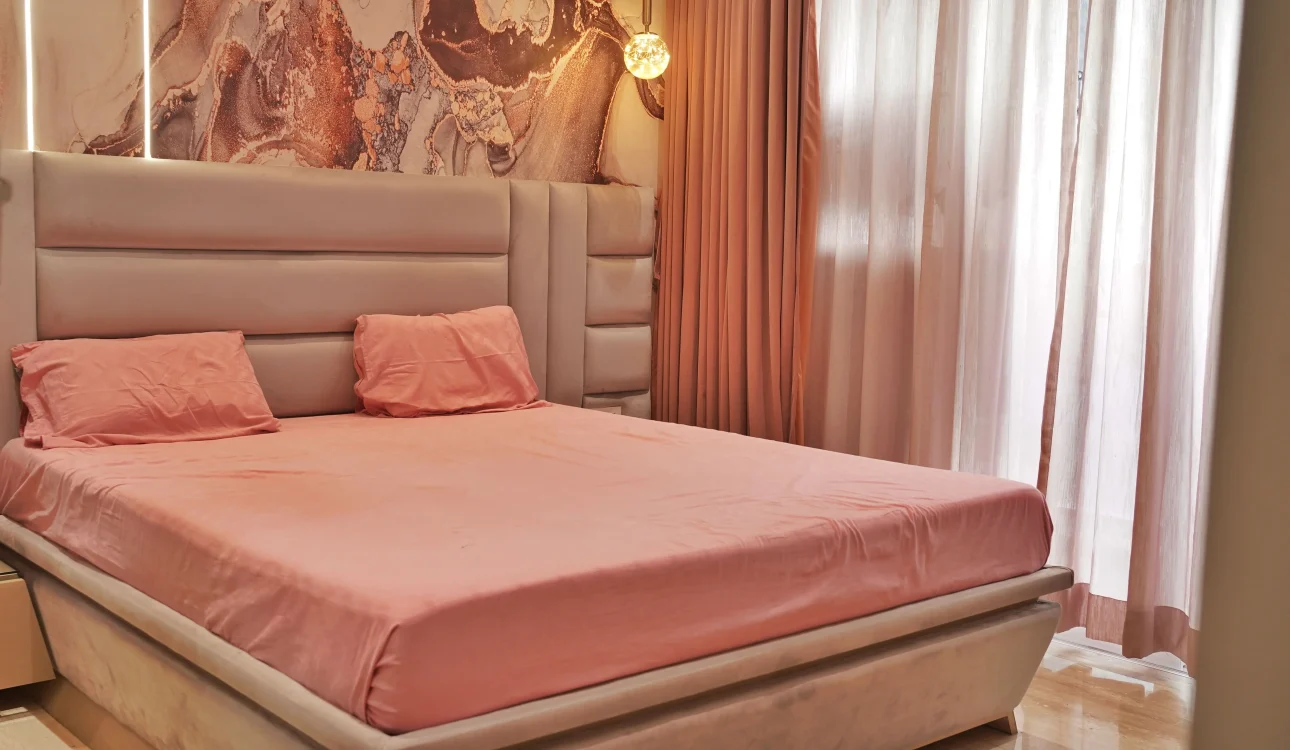Investing in a professional interior designer can provide significant benefits for both residential and commercial spaces. Here are some reasons why hiring a professional interior designer is a wise investment:
1. Expertise and Experience
- Knowledge of Design Principles: Professional designers have a deep understanding of design principles, including balance, proportion, and color theory, which can transform a space effectively.
- Problem-Solving Skills: They can address and resolve design challenges, such as awkward spaces, lighting issues, and spatial constraints, with creative solutions.
- Trends and Styles: Designers stay updated with the latest trends and styles, ensuring your space is contemporary and stylish.
2. Cost Savings
- Avoid Costly Mistakes: Designers can help you avoid expensive errors, such as choosing the wrong paint color, furniture size, or layout, which saves money in the long run.
- Budget Management: They can work within your budget, prioritizing spending on items that have the most significant impact and finding cost-effective alternatives for other elements.
3. Time Efficiency
- Project Management: Designers manage the entire project, coordinating with contractors, suppliers, and other professionals, saving you time and stress.
- Streamlined Process: With a professional’s guidance, the design process is more efficient, reducing the time it takes to complete the project.
4. Access to Resources
- Network of Suppliers and Contractors: Designers have established relationships with suppliers and contractors, often securing better deals and ensuring quality workmanship.
- Exclusive Products: They can access exclusive products and materials not available to the general public, providing a unique and customized look.
5. Enhanced Functionality and Aesthetics
- Optimal Space Utilization: Professionals ensure that the space is used efficiently, maximizing functionality without compromising on aesthetics.
- Personalized Design: They tailor the design to your specific needs, preferences, and lifestyle, creating a space that is both beautiful and practical.
6. Increased Property Value
- Higher Resale Value: Well-designed spaces can significantly increase the resale value of your home or business, making it a lucrative investment.
- Market Appeal: A professionally designed space is more attractive to potential buyers or clients, enhancing its marketability.
7. Sustainability
- Eco-Friendly Options: Designers can incorporate sustainable and eco-friendly materials and practices, which are increasingly important to modern consumers.
- Energy Efficiency: They can design spaces that reduce energy consumption, leading to long-term savings on utility bills.
8. Stress Reduction
- Professional Guidance: Having an expert handle the complexities of the design process reduces the stress and uncertainty associated with decorating or renovating.
- Confidence in Outcome: Knowing that a professional is in charge provides peace of mind and confidence in achieving the desired outcome.
Understanding an Interior Designer’s Value
1. Creative Vision and Innovation
- Unique Ideas: Interior designers bring a creative vision to the table, offering innovative ideas that you might not have considered.
- Personalization: They can tailor designs to reflect your personality, preferences, and functional needs, ensuring a unique and personalized space.
2. Professional Expertise
- Technical Knowledge: Designers possess technical knowledge about materials, finishes, furnishings, and architectural details that can elevate the design.
- Design Principles: They apply principles such as balance, harmony, and contrast to create aesthetically pleasing and cohesive spaces.
3. Comprehensive Planning
- Detailed Planning: Interior designers provide detailed plans and drawings, which include floor plans, elevations, and 3D renderings, giving a clear picture of the final outcome.
- Efficient Space Utilization: They optimize space usage, ensuring functionality and flow while maintaining an appealing design.
4. Project Management
- Coordination and Oversight: Designers manage all aspects of the project, from initial concept to final installation, coordinating with contractors, artisans, and suppliers.
- Timeline Management: They ensure that the project stays on schedule, minimizing delays and disruptions.
5. Access to Resources
- Industry Connections: Interior designers have connections with high-quality suppliers, craftsmen, and tradespeople, which can result in better service and products.
- Exclusive Access: They often have access to exclusive furnishings, fabrics, and accessories that aren’t available to the general public.
6. Budget Management
- Cost Efficiency: Designers help in setting and adhering to a budget, preventing overspending and finding cost-effective solutions.
- Value Engineering: They can suggest ways to achieve high-end looks without the high-end costs, maximizing the value of your investment.
7. Aesthetic and Functional Balance
- Visual Appeal: Designers enhance the visual appeal of a space, creating environments that are not only beautiful but also inviting and comfortable.
- Functional Design: They ensure that spaces are functional and meet the daily needs of the occupants, whether it’s a home or a business.
8. Increased Property Value
- Market Appeal: A professionally designed space is more attractive to potential buyers, increasing the property’s marketability.
- Resale Value: High-quality design can significantly boost the resale value of a property, making it a smart investment.
9. Sustainability and Environmental Impact
- Eco-Friendly Designs: Designers can incorporate sustainable materials and practices, reducing the environmental impact.
- Energy Efficiency: They can design spaces that are energy-efficient, leading to lower utility costs and a smaller carbon footprint.
10. Stress Reduction
- Problem Solving: Designers handle potential issues that arise during the design process, providing solutions and keeping the project on track.
- Peace of Mind: Knowing that a professional is managing the project reduces stress and ensures a smoother, more enjoyable experience.
Tips on How to Hire an Interior Designer on a Budget
Hiring an interior designer can significantly transform your home or business space, elevating both its aesthetics and functionality. However, many individuals shy away from this idea due to concerns about the potential high costs involved. The good news is that it is entirely possible to hire an interior designer on a budget without compromising on quality or creativity. With strategic planning, clear communication, and some proactive steps, you can find a professional who meets your financial constraints while delivering a beautifully designed space. This comprehensive guide will walk you through various tips and strategies to help you hire an interior designer on a budget.
1. Setting a Realistic Budget
The first step in hiring an interior designer on a budget is to establish a clear and realistic budget for your project. This includes not only the designer’s fees but also the costs of materials, furnishings, and labor. Be honest about what you can afford and prioritize the most critical areas of your space that need professional attention. Having a well-defined budget will help you communicate your financial constraints to potential designers and find someone willing to work within those limits.
2. Research and Compare Designers
Not all interior designers are the same, and their fees can vary significantly. Start by researching and compiling a list of designers who offer budget-friendly services. Look for those who have experience with projects similar to yours and whose style resonates with your vision. Review their portfolios, check client testimonials, and compare their pricing structures. It’s important to find a designer whose work you admire and who can accommodate your budget.
3. Explore Different Pricing Models
Interior designers typically offer various pricing models, such as hourly rates, flat fees, or package deals. Understanding these options can help you choose the most cost-effective approach for your project.
- Hourly Rates: Some designers charge by the hour, which can be ideal for smaller projects or specific consultations. This allows you to control the scope of work and manage costs more effectively.
- Flat Fees: For a defined scope of work, a flat fee provides clarity on costs and prevents unexpected expenses. This can be beneficial if you have a larger project with well-defined goals.
- Package Deals: Many designers offer packages that bundle services at a discounted rate. These packages might include initial consultations, design plans, and a certain number of follow-up visits.
4. Consider Virtual Design Services
With the rise of digital technology, many interior designers now offer virtual design services. These services can be more affordable than traditional in-person consultations. Virtual design packages typically include mood boards, floor plans, shopping lists, and sometimes even 3D renderings. This approach allows you to implement the design yourself while benefiting from a professional’s expertise.
5. Mixing High and Low
A smart strategy to stay within budget is to mix high-end pieces with more affordable items. Invest in key furniture pieces that will see the most use and have the greatest impact on your space, such as a sofa or a dining table. For accessories and decor, you can opt for budget-friendly alternatives from discount stores, online marketplaces, or second-hand shops. This approach allows you to achieve a high-end look without the high-end cost.
6. Utilize Free Resources and Tools
There are many free resources available online that can aid in your design project. Use design apps and websites to experiment with layouts and color schemes. DIY blogs and YouTube channels offer a wealth of information and inspiration, providing step-by-step guides on various aspects of interior design. These resources can help you make informed decisions and gain confidence in your design choices.
Long-Term Value and Return on Investment:
When contemplating the decision to hire an interior designer, it’s essential to consider the long-term value and return on investment (ROI) that professional design can bring. While the initial costs might seem significant, the benefits extend far beyond immediate aesthetic improvements. A well-designed space can significantly enhance your quality of life, boost property value, and offer substantial long-term financial savings.
Interior designers bring a wealth of expertise, creative solutions, and access to high-quality resources, ensuring that your space is not only beautiful but also functional and efficient. This professional guidance helps avoid costly mistakes, maximizes budget effectiveness, and ensures that every element of the design serves a purpose. The result is a space that is tailored to your needs, enhancing comfort, usability, and overall well-being.
Investing in professional design can also lead to significant financial gains. For homeowners, a beautifully designed space can increase property value and make it more attractive to potential buyers, resulting in a higher resale price. For businesses, a well-designed environment can boost employee productivity, improve client impressions, and enhance the overall brand image, leading to better business outcomes.
Furthermore, professional design often incorporates sustainable practices and energy-efficient solutions, leading to long-term savings on utility bills and maintenance costs. By choosing durable materials and timeless designs, you ensure that your space remains stylish and functional for years to come, reducing the need for frequent updates.
In summary, hiring an interior designer is a strategic investment that yields significant long-term value and ROI. Whether for a home or business, the benefits of professional design extend well beyond the initial transformation, providing ongoing advantages that enhance both financial outcomes and quality of life.
Final Thoughts: Making an Informed Decision
Hiring an interior designer is a strategic investment that can transform your space and offer substantial long-term benefits. By enhancing aesthetics, functionality, and efficiency, professional design not only elevates your living or working environment but also increases property value and can lead to significant cost savings over time.
When considering this investment, it’s crucial to define your budget, prioritize your needs, and research potential designers thoroughly. Clear communication of your vision and financial constraints will help find a designer who aligns with your goals and can deliver within your budget.
Remember that the value of a professional interior designer extends beyond immediate visual improvements. It includes enhanced quality of life, increased property value, energy efficiency, and overall better use of your space. Whether you’re renovating your home to reflect your personal style or optimizing a business environment for productivity and client appeal, professional design services can provide a strong return on investment.
Making an informed decision involves weighing these long-term benefits against the initial costs and understanding that the expertise and creative solutions a designer brings can significantly enhance your space and overall well-being. With careful planning and the right professional, your investment in interior design can pay off for years to come.
Conclusion
Investing in a professional interior designer is a wise decision that extends beyond the immediate visual transformation of your space. The expertise, creativity, and strategic planning that designers bring can significantly enhance both the aesthetics and functionality of your home or business. This investment offers numerous long-term benefits, including increased property value, improved quality of life, and substantial cost savings over time.
A professional interior designer helps you avoid costly mistakes and ensures that your budget is used efficiently, prioritizing elements that will have the most significant impact. Their knowledge of design principles and access to exclusive resources result in a space that is not only beautiful but also tailored to your specific needs and lifestyle.
Moreover, the long-term value includes enhanced market appeal, higher resale value, and improved energy efficiency through sustainable design choices. For businesses, a well-designed environment can boost employee productivity, enhance client impressions, and strengthen your brand image.
In summary, the value of hiring a professional interior designer is multifaceted, encompassing financial, functional, and emotional benefits. By making a strategic investment in professional design, you ensure that your space is optimized for both present enjoyment and future gains, making it a decision that truly pays off in the long run.


































